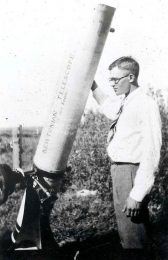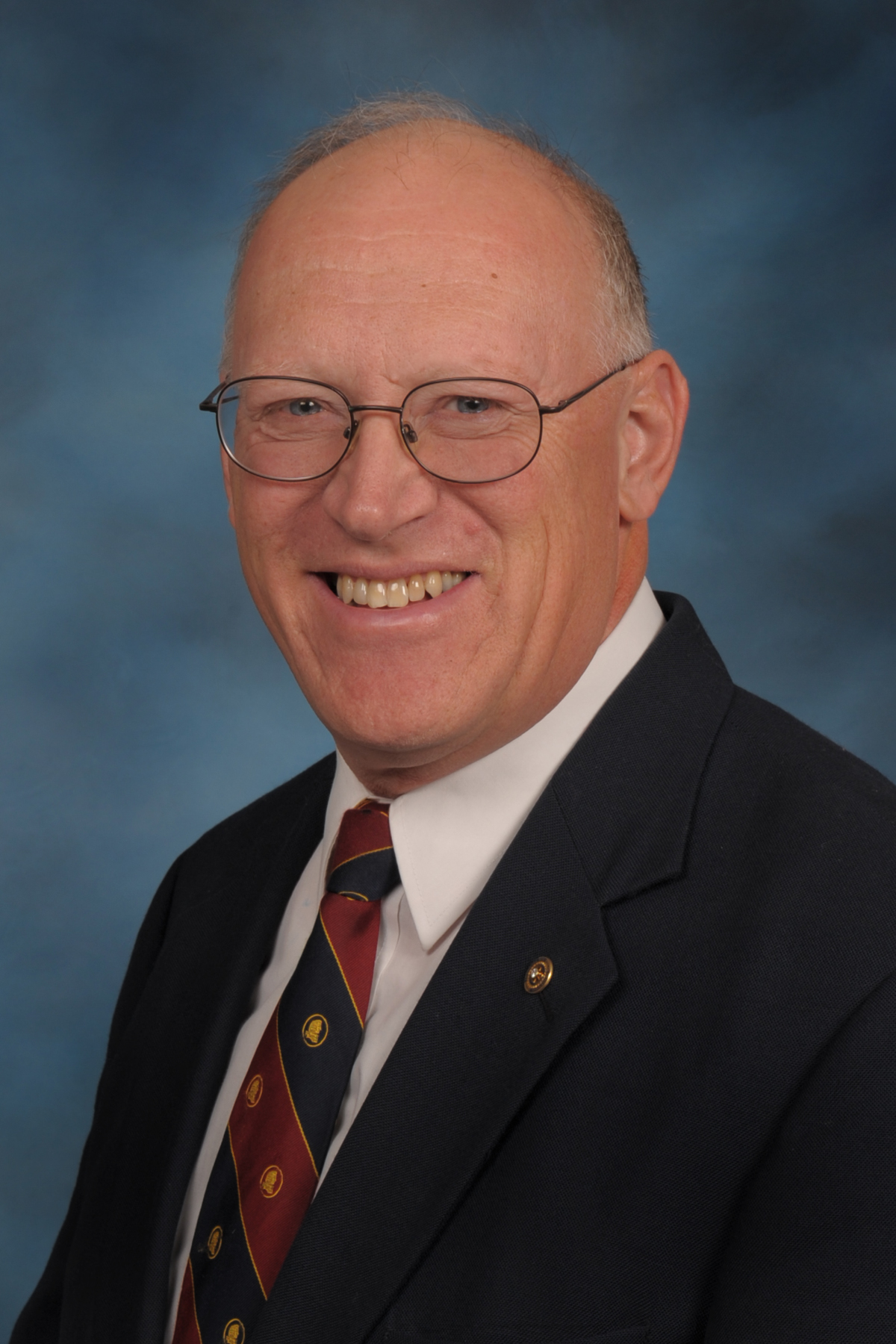Feb. 18, 1930. A young man is studying outer space at an observatory in Arizona. He is comparing telescopic, photographic images of the distant night sky. Suddenly a terrific thrill comes over him as he realizes that the image he has just seen provides the scientific evidence of a historic discovery: He has discovered a planet. It was a remarkable accomplishment for a young farm boy from Kansas.

Clyde Tombaugh is the man who discovered Pluto. In his autobiography, Out of the Darkness, Tombaugh describes how it all began. He was born on a farm in Illinois. In 1922, his family moved to a wheat farm near Burdett, Kansas.
While studying geography in the sixth grade, Tombaugh thought: “What would the geography on other planets be like?” Clyde’s uncle Lee lived on a farm nearby. He was an amateur astronomer. Lee lent him a simple telescope and an astronomy book which Clyde found fascinating. Scientists like Galileo became his childhood heroes.
In 1925, Clyde was a senior at Burdett High. He was selected by his school to participate in a state scholastic competition at Kansas State University and finished fourth in the physics competition. More importantly, he discovered a direction in life. “This was my first real contact with a university,” he wrote. “I liked what I saw. If only I could become a college professor.”
Unfortunately, times on the farm were tough. “In my situation, (college) seemed utterly impossible,” Tombaugh wrote. He went back to work on the farm.
Clyde wanted a telescope of his own but couldn’t afford to buy one. He built one on the farm using the crankshaft of a 1910 Buick and parts from a cream separator. He made drawings of what he observed of the planets and sent them to scientists at Lowell Observatory in Flagstaff, Arizona.
The timing was perfect. The observatory director was looking for an amateur assistant. Ultimately, Clyde was invited to come to Arizona to work in the observatory. By working for neighbors harvesting wheat, he had earned enough money for a one-way train ticket. In 1929, he went to Flagstaff and reported to work at the observatory.
One of his jobs, along with giving tours and putting logs in the furnace, was to compare photographic images of outer space in an effort to locate what scientists speculated was a “trans-Neptunian planet” – another planet beyond Neptune. The distant stars were fixed in space but planets would move, so he would compare night sky photos taken at different times to look for evidence of movement. Of course, he had to cover the entire night sky, so this was a huge and daunting task. He set about to methodically review these telescopic images. He spent 7,000 hours examining about 90 million star images.
On Feb. 18 at 4:00 p.m., he suddenly spotted movement when comparing two photos. He carefully checked his work. There was no doubt: He had found a planet. “For the next 45 minutes or so, I was in the most excited state of mind in my life,” Tombaugh wrote.
His supervisors instructed him to rephotograph this region of the night sky so as to be absolutely certain. He did so and verified his findings. On March 13, 1930, the Lowell Observatory announced the finding of a ninth planet in the solar system. The news caused a sensation.
“It is customary to name planets after mythological deities,” Tombaugh wrote. An 11-year-old girl in Oxford, England suggested the name Pluto, the Greek god of the lower world, and the name was selected. Tombaugh went back to study at the University of Kansas and ultimately became a professor at New Mexico State University, so his dream came true.
What an amazing accomplishment for a young man from a rural community like Burdett, population 247 people. Now, that’s rural.
In 1930, young Clyde Tombaugh made the historic discovery of another planet. We salute Clyde Tombaugh and all scientists who are making a difference with discoveries of their own.
And there’s more. The town of Burdett would later honor Clyde Tombaugh. We’ll learn about that next week.
Audio and text files of Kansas Profiles are available at http://www.kansasprofile.com. For more information about the Huck Boyd Institute, interested persons can visit http://www.huckboydinstitute.org.
